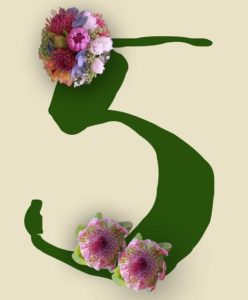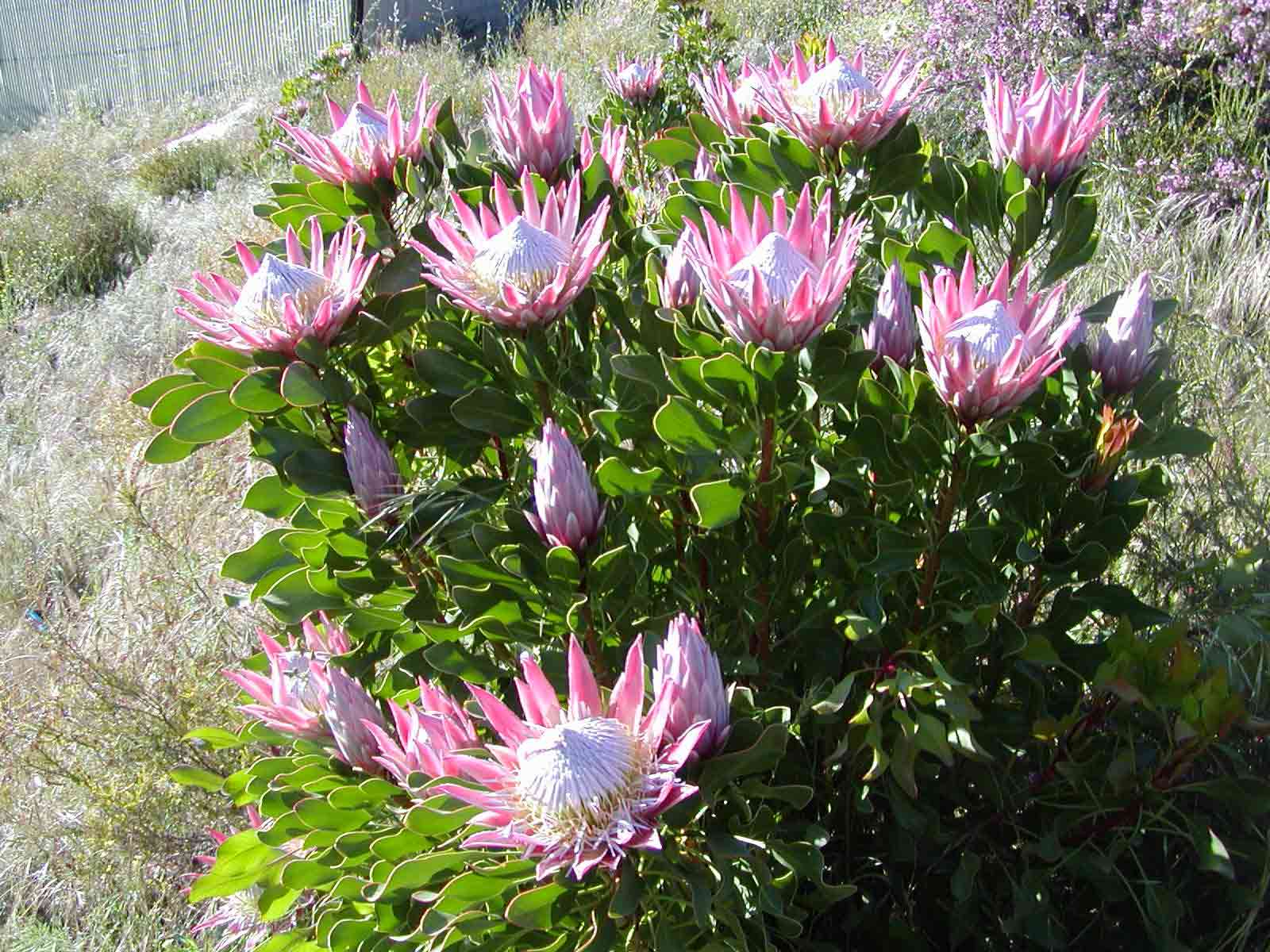 Planting
Planting
The key is location, location, location.
Save
 For growing, Proteas must have a full sun location with good air movement around the plants. The single most critical factor in growing Proteas is to provide adequate water drainage; if the soil drains well, good results will usually be achieved. Proteas rarely succeed in heavy clay soils, notorious for their poor drainage. Planting Proteas on slopes or on slightly elevated mounds is often beneficial, because water runoff decreases drainage problems. Protea plants are generally hardy but should be protected from frost. In winter they can usually handle frosts around 25-30°F. Dig a hole twice the width of the container and one and a half the height. The backfill can be amended with fir bark, redwood shavings or leaf mold, but it is not necessary.
For growing, Proteas must have a full sun location with good air movement around the plants. The single most critical factor in growing Proteas is to provide adequate water drainage; if the soil drains well, good results will usually be achieved. Proteas rarely succeed in heavy clay soils, notorious for their poor drainage. Planting Proteas on slopes or on slightly elevated mounds is often beneficial, because water runoff decreases drainage problems. Protea plants are generally hardy but should be protected from frost. In winter they can usually handle frosts around 25-30°F. Dig a hole twice the width of the container and one and a half the height. The backfill can be amended with fir bark, redwood shavings or leaf mold, but it is not necessary.
Try to keep the soil line the same as it was when the plant was in a container, but if the sandy soil from the pot is exposed it must be covered with one quarter inch of new soil.
Save
Mulches are good but must be kept off the trunk of the plant. The crown of the plants must be able to dry off. Proteas also grow well if kept in pots, especially the pincushions.
 Once you have chosen a planting site, dig a hole somewhat wider and deeper than the root ball of the plant. Be sure to break up the soil that is removed from the hole in order to soften its texture.
Once you have chosen a planting site, dig a hole somewhat wider and deeper than the root ball of the plant. Be sure to break up the soil that is removed from the hole in order to soften its texture.
 After planting the Protea, build a temporary circular basin of soil around the plant and fill the basin with water. This action provides the plant with its first irrigation in the new environment. Once this task has been completed, the basin of soil can be removed.
After planting the Protea, build a temporary circular basin of soil around the plant and fill the basin with water. This action provides the plant with its first irrigation in the new environment. Once this task has been completed, the basin of soil can be removed.
 After planting, it would be a good idea to add a top dressing of wood chips or some other organic substance to the soil surrounding the plant to form a mulch. Mulching keeps roots of the plants cool, holds in moisture, and discourages weed growth.
After planting, it would be a good idea to add a top dressing of wood chips or some other organic substance to the soil surrounding the plant to form a mulch. Mulching keeps roots of the plants cool, holds in moisture, and discourages weed growth.
Proteas generally enjoy full sun and object to areas that are always in the shade. Because Proteas enjoy air circulation, don't plant them too close to each other or in close proximity to other types of plant material.
 Blooms appear from the second year and the plants bloom annually thereafter. Proteas can be staked but prefer to spread naturally (often growing on their elbows). Prune plants back as you cut flowers. Proteas have fine roots near the surface, so be careful not to cultivate too deeply.
Blooms appear from the second year and the plants bloom annually thereafter. Proteas can be staked but prefer to spread naturally (often growing on their elbows). Prune plants back as you cut flowers. Proteas have fine roots near the surface, so be careful not to cultivate too deeply.

Watering
Proteas are readily killed by over watering. A deep watering once a week should be sufficient. If watered by hose, place the hose end five or six inches from the trunk. Water at a very slow drip for one to two hours.
It is best to establish an irrigation system that waters the plants at or near soil level. The roots of the proteas receive water but the foliage stays dry.
Irrigating with sprinklers that spray water far above ground level is usually discouraged, because some members of the Proteaceae family resent having their foliage moistened on a frequent basis.
 Pruning
Pruning
Pruning is important on young plants to keep them full. Pruning is best done during and after flowering. Always make cuts above at least four or five leaves. Never cut into bare stems (no leaves). Always remove old flower heads.
 Fertilization
Fertilization
Proteas are very light feeders. They are especially damaged by too much phosphorous in the fertilizer. Fertilizers with a maximum of four percent phosphorous are suitable. Use a liquid fertilizer and one quarter the recommended rate for shrubs.








 Pesticides
Pesticides